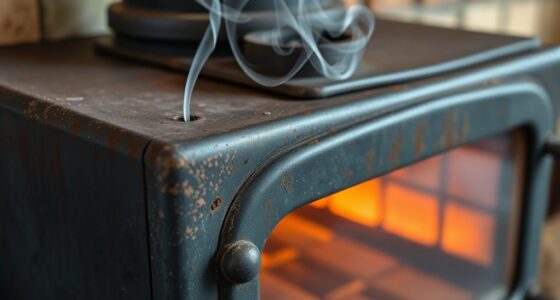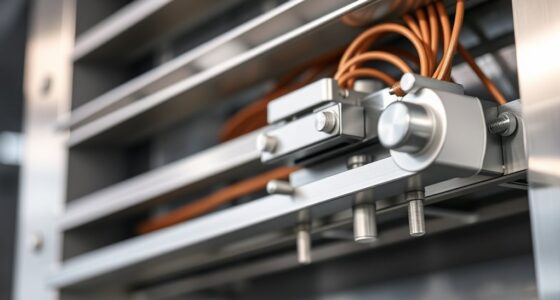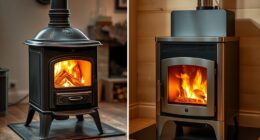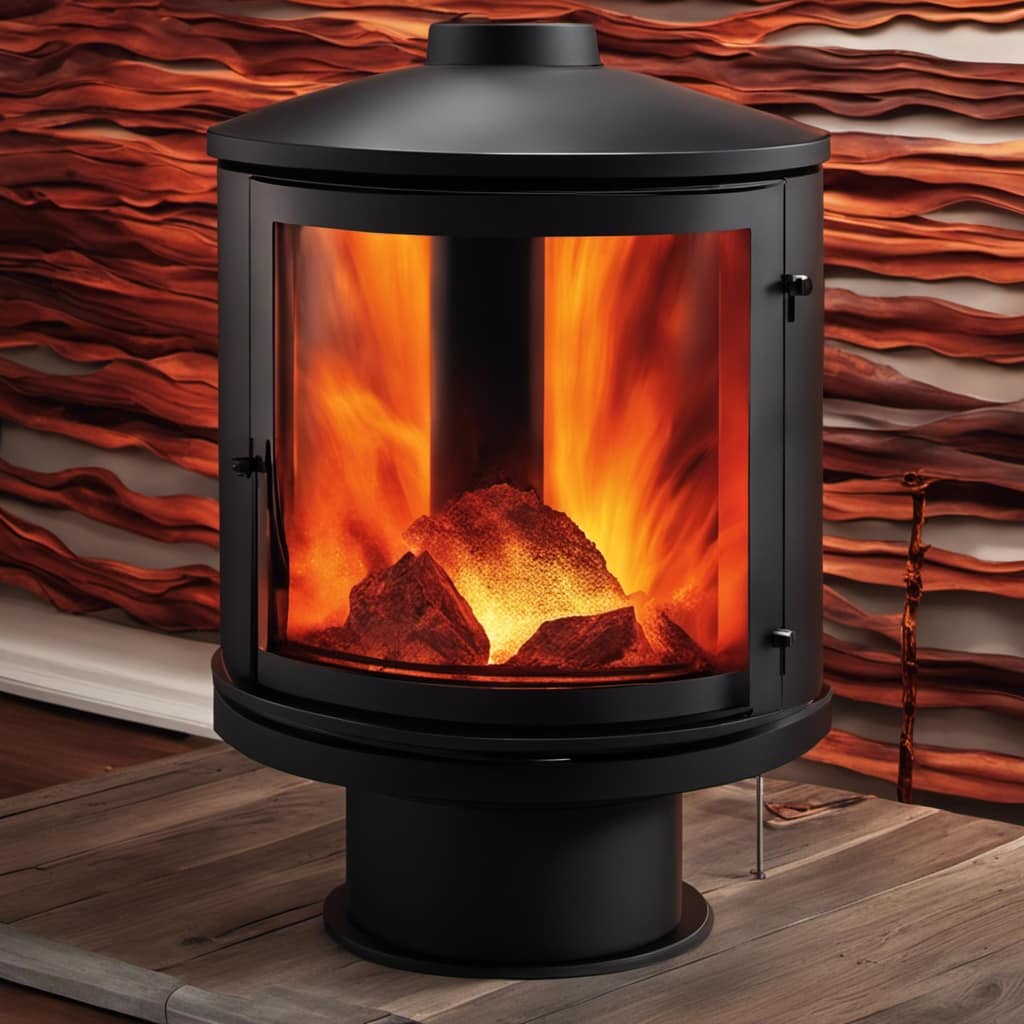
I’m here to support you in the process of connecting a stove pipe to a wood stove, acting as a dependable expert by your side. With the proper knowledge and meticulous attention to detail, you can ensure a safe and effective installation.
From measuring and planning to securing and sealing, I’ll walk you through each step.
So let’s get started and make connecting your stove pipe to your wood stove a breeze!
Key Takeaways
- Proper measurement and calculation of the distance between the wood stove and the wall is crucial for stove pipe installation.
- Selecting the appropriate stove pipe diameter based on the size and output of the wood stove is important for efficient and safe operation.
- Ensuring a tight and secure fit between the stove pipe and wood stove, using heat-resistant materials and following manufacturer’s recommendations, is essential for a successful connection.
- Regular maintenance, inspection, and cleaning of the stove pipe are necessary to prevent air leaks, corrosion, and chimney fires.
Required Tools for Connecting Stove Pipe to Wood Stove
I’ll need a few tools to properly connect the stove pipe to the wood stove. As a fireplace and chimney specialist, I possess in-depth knowledge about various types of stoves, chimney systems, and the proper installation process. When it comes to connecting a stove pipe to a wood stove, there are specific steps and materials required. Let me guide you through the process.
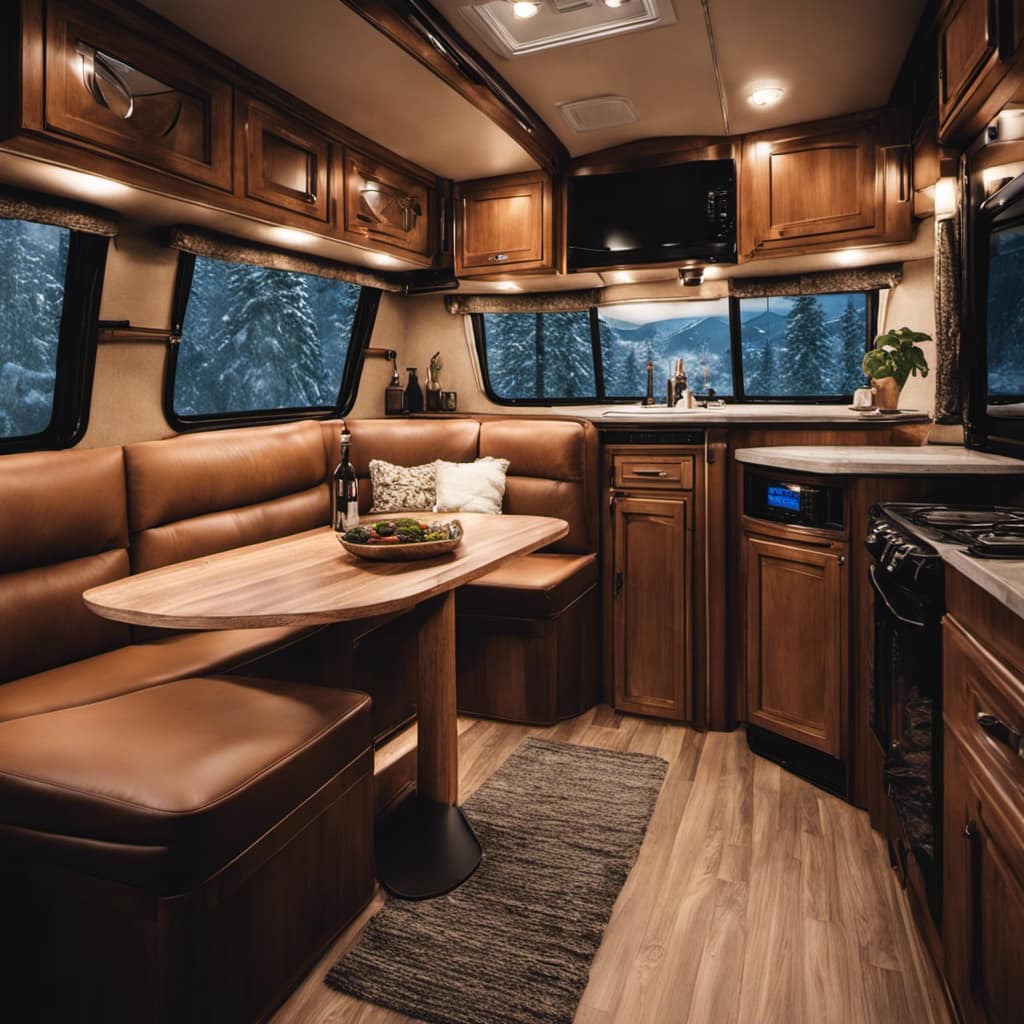
First, you’ll need a few essential tools. These include a tape measure, a level, a drill with appropriate drill bits, a screwdriver, and high-temperature silicone sealant. These tools will help ensure a secure and proper connection between the stove pipe and the wood stove.
To begin, measure the diameter of the flue collar on your wood stove. This measurement will determine the size of the stove pipe you need. It’s crucial to get the correct size to ensure a tight fit.
Next, assemble the stove pipe sections, making sure they fit securely together. Use the drill and screws to attach the stove pipe to the flue collar, ensuring a tight seal.
Finally, apply a bead of high-temperature silicone sealant around the joint where the stove pipe connects to the wood stove. This will provide an additional layer of security and prevent any leaks.
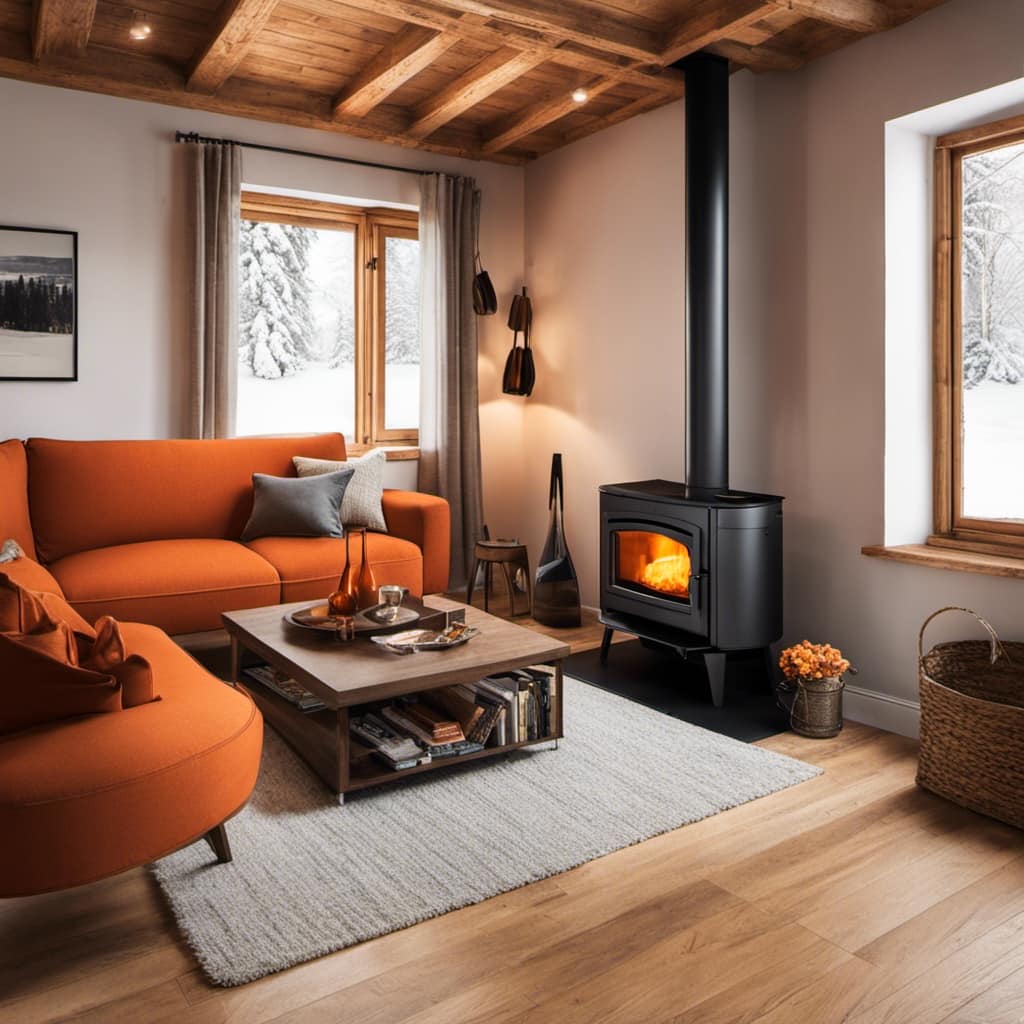
Measuring and Planning for the Stove Pipe Connection
When planning for the connection of the stove pipe, I’ll need to accurately measure the distance between the wood stove and the wall. This is crucial for determining the length of the stove pipe needed and ensuring a proper fit. As a fireplace and chimney specialist, I understand the importance of calculating measurements correctly to avoid any issues during the installation process.
Here are three key steps to consider when measuring and planning for the stove pipe connection:
Measure the distance: Use a tape measure to determine the exact distance between the wood stove and the wall. Take into account any obstacles or obstructions that may affect the placement of the stove pipe.
Calculate the stove pipe length: Once you’ve the measurement, add the necessary clearance requirements specified by the manufacturer. This will ensure proper ventilation and prevent any heat damage to the surrounding area.
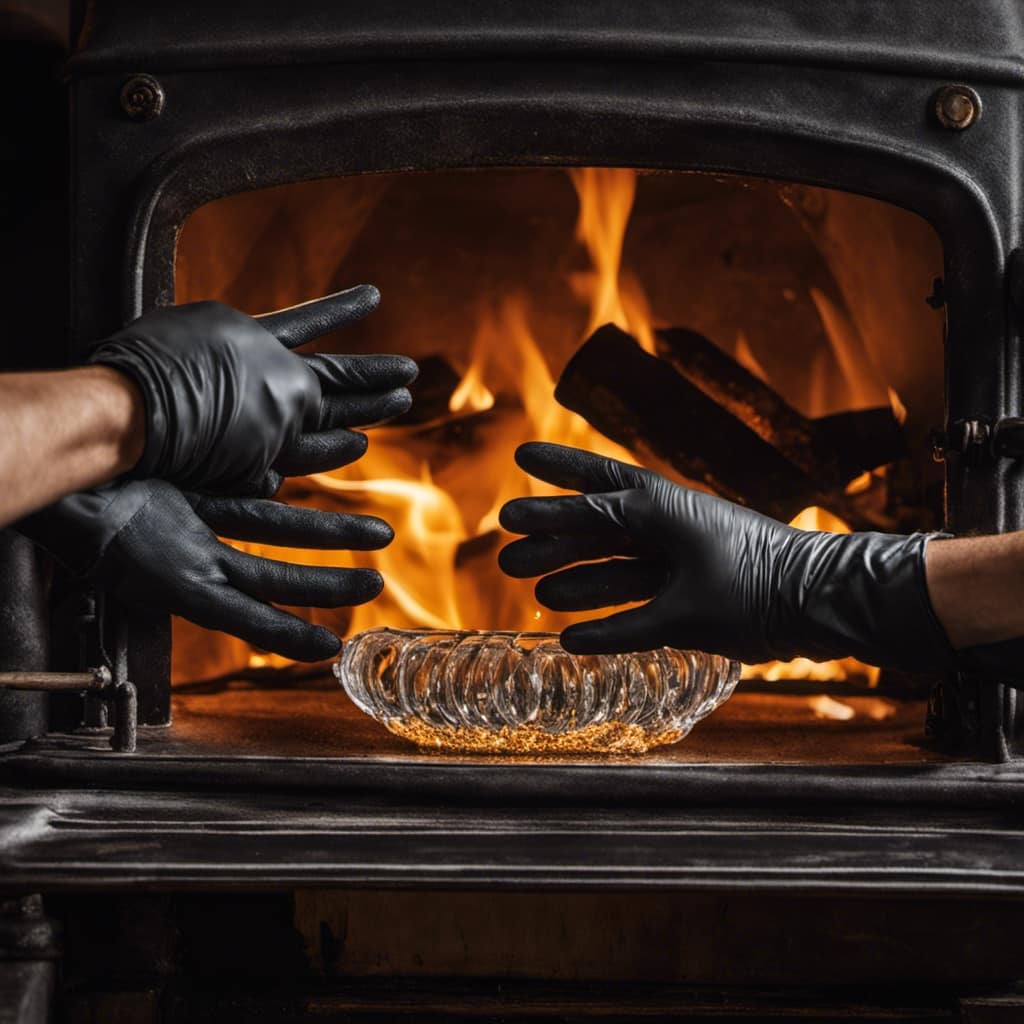
Select the appropriate stove pipe diameter: Consider the size and output of the wood stove to determine the correct diameter for the stove pipe. Choosing the right diameter is crucial for efficient airflow and optimal performance.
By following these steps and considering the specific requirements of your wood stove, you can ensure a successful stove pipe connection.
Now, let’s move on to the next step of preparing the wood stove for stove pipe installation.
Preparing the Wood Stove for Stove Pipe Installation
To ensure a proper fit, I must prepare the area surrounding the stove for the upcoming connection. As a fireplace and chimney specialist, I understand the importance of proper preparation before connecting the stove pipe to a wood stove. This step is crucial to ensure a safe and efficient installation.
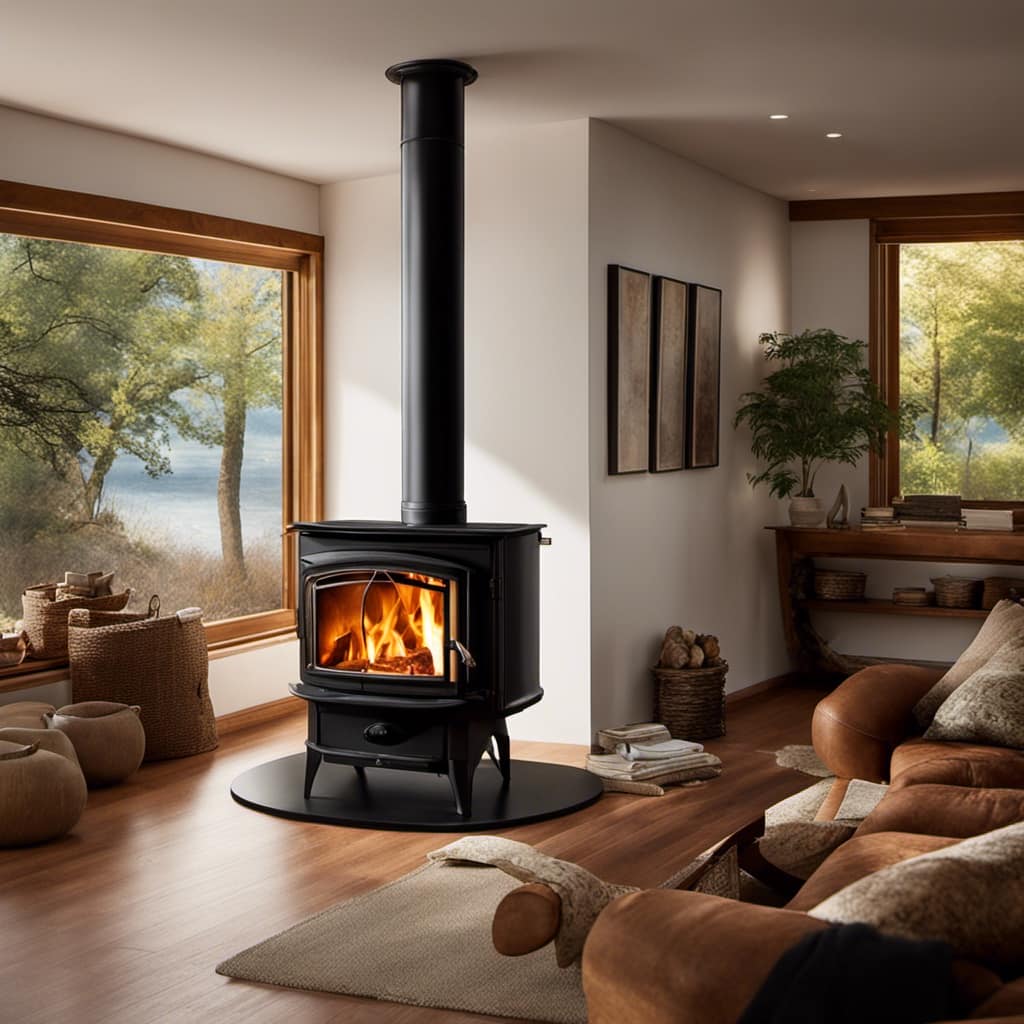
First, I measure the wood stove to determine the appropriate size and type of stove pipe needed. This measurement is crucial in selecting the correct diameter and length of the pipe. It’s essential to choose a pipe that’s compatible with the stove and meets the necessary safety standards.
Next, I prepare the stove pipe by cleaning it thoroughly. Any debris or residue can affect the performance of the wood stove and potentially cause a safety hazard. I make sure to remove any dust, creosote, or other obstructions from both the interior and exterior of the pipe.
In addition to cleaning, I inspect the stove pipe for any damages or defects. Any cracks, holes, or loose fittings must be repaired or replaced to ensure a proper connection. Safety is my top priority, so I take the time to carefully examine the pipe and make any necessary repairs before proceeding with the installation.
Once the wood stove and stove pipe are prepared, I can move on to the next step of the installation process.
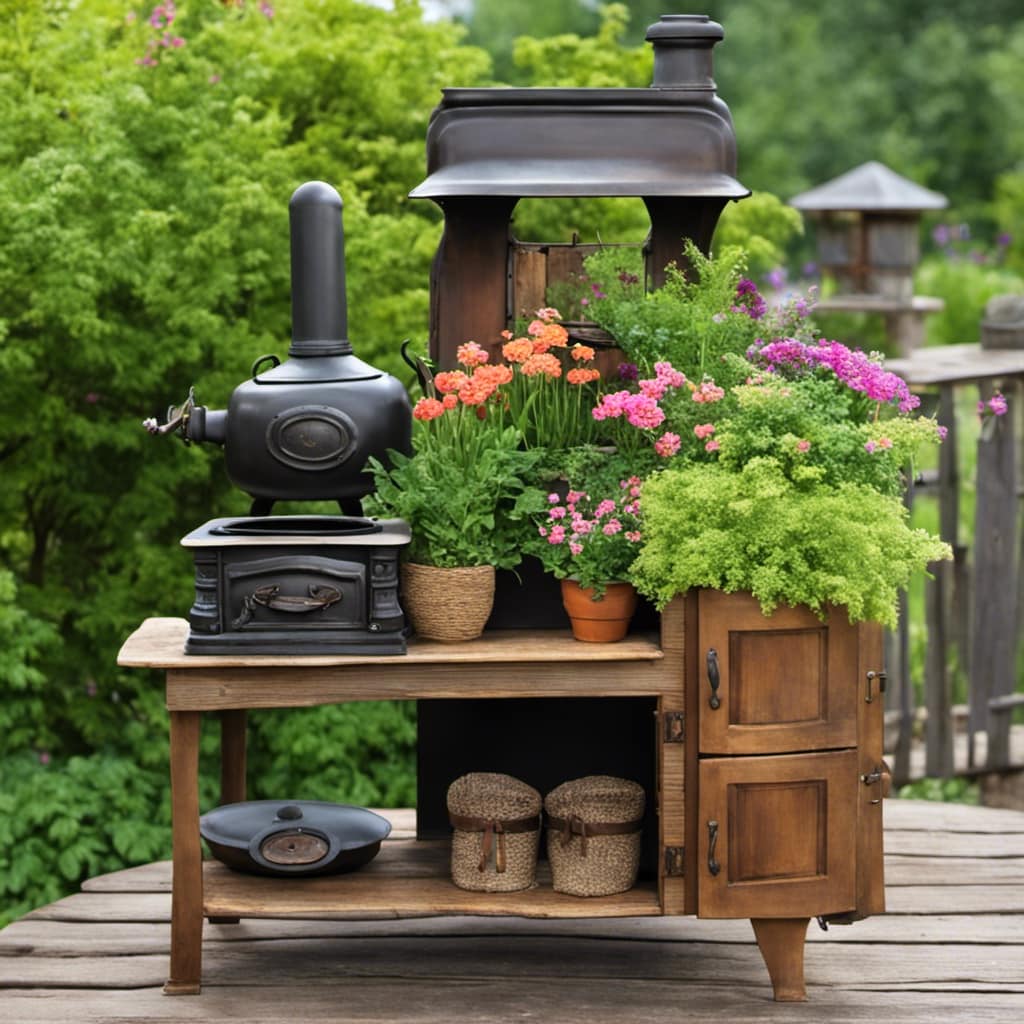
Attaching the Stove Pipe to the Wood Stove
As a specialist, I ensure a secure attachment between the stove pipe and the wood stove. When connecting a stove pipe to a wood stove, there are a few key steps to follow to ensure a safe and efficient installation:
Choose the right attaching method: There are different methods to attach the stove pipe to the wood stove, including using brackets, screws, or clamps. The method chosen will depend on the specific stove and pipe configuration. It’s important to consult the manufacturer’s instructions for the recommended attaching method.
Avoid common mistakes: One common mistake is using improper materials for the attachment. It’s crucial to use materials that are heat-resistant and designed for stove pipe installations. Another mistake isn’t properly aligning the stove pipe and wood stove. It’s essential to ensure a tight and secure fit to prevent any leaks or drafts.
Double-check the connection: Before completing the installation, it’s vital to double-check the connection between the stove pipe and the wood stove. Ensure that all components are securely fastened and that there are no gaps or loose fittings. This will help maintain the efficiency and safety of the wood stove.
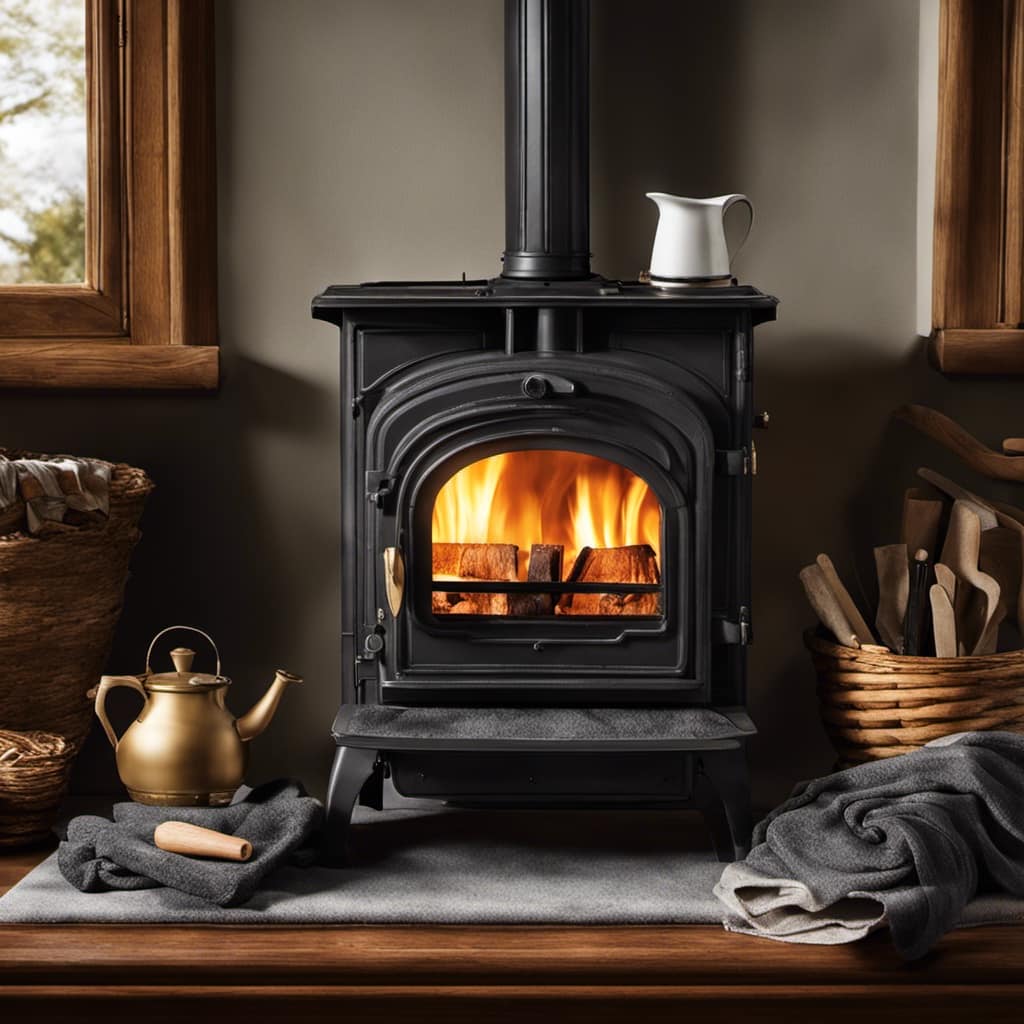
By following these attaching methods and avoiding common mistakes, you can ensure a secure and reliable connection between the stove pipe and the wood stove.
Now, let’s move on to the next step: securing and sealing the stove pipe connection.
Securing and Sealing the Stove Pipe Connection
To ensure a secure and leak-free stove pipe connection, it’s crucial to follow the proper installation steps.
As a fireplace and chimney specialist, I’d emphasize the importance of attention to detail in this process.
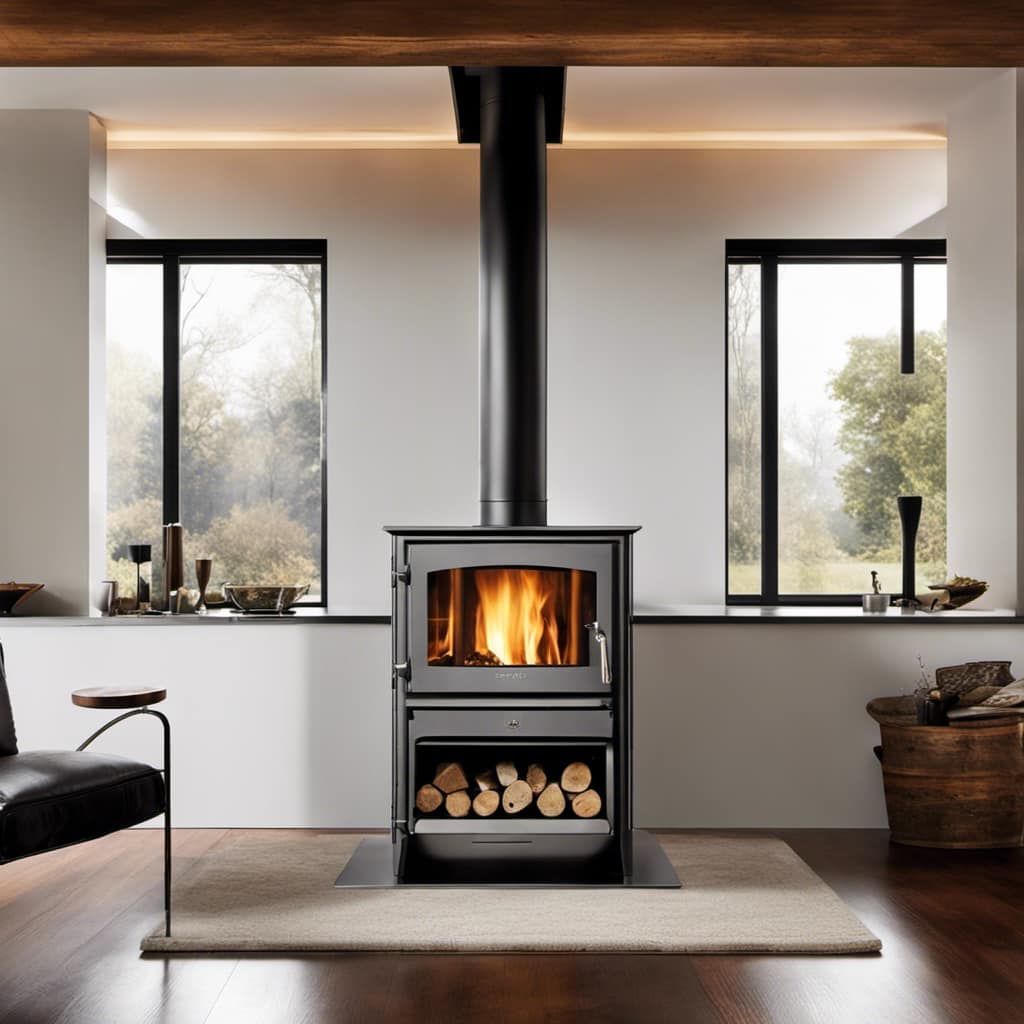
This includes using the right materials, making accurate measurements, and ensuring compatibility with safety standards.
Proper Pipe Attachment
I can attach the stove pipe properly by using the correct connectors and securing them tightly. As a fireplace and chimney specialist, I’ve in-depth knowledge about the various types of stoves and chimney systems, as well as the proper installation process.
When connecting a stove pipe to a wood stove, there are a few key considerations to keep in mind:
Proper Pipe Alignment: It’s crucial to ensure that the stove pipe aligns correctly with both the wood stove and the chimney. This will help to maintain proper airflow and prevent any smoke or fumes from escaping into your home.

Chimney Compatibility: Before attaching the stove pipe, it’s essential to ensure that the chimney is compatible with the wood stove. This includes checking the size, shape, and material of the chimney to ensure a secure and efficient connection.
Safety Standards: When connecting the stove pipe, it’s important to adhere to safety standards. This includes using the appropriate materials and ensuring that the pipe is securely fastened to prevent any leaks or potential fire hazards.
Preventing Air Leaks
To prevent air leaks, I always make sure that all the joints and connections in the stove pipe are tightly sealed.
As a fireplace and chimney specialist, I possess in-depth knowledge about various types of stoves, chimney systems, and the proper installation process.
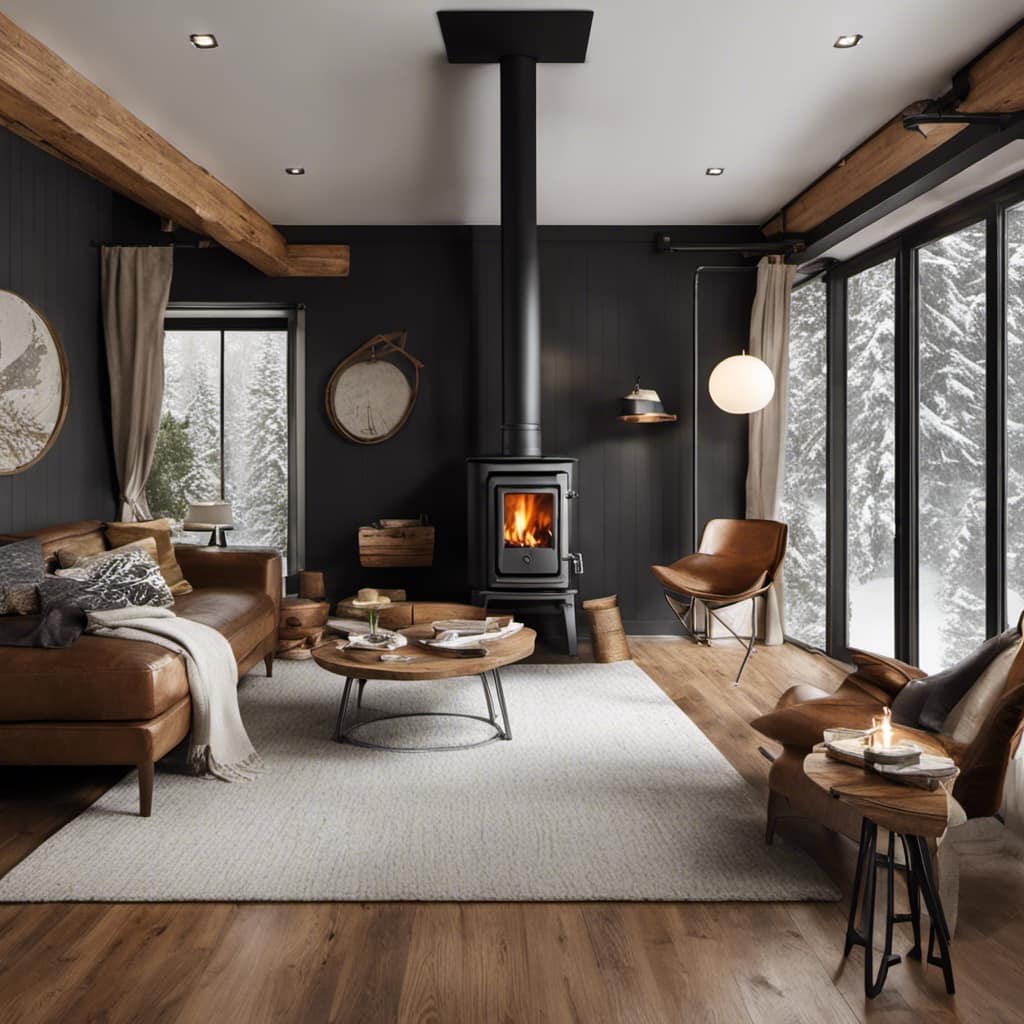
When connecting a stove pipe to a wood stove, it’s crucial to use airtight sealing techniques to ensure optimal performance and safety.
Insulation plays a significant role in preventing heat loss and maintaining efficiency. I recommend using high-quality insulation materials, such as fiberglass or mineral wool, to create a tight seal around the pipe joints.
Additionally, it’s essential to pay attention to detail, ensuring that all connections are secure and properly aligned.
Are the Same Steps Used to Connect Stove Pipe to a Lowes Wood Stove Chimney?
Yes, the same steps are typically used to connect stove pipe to a Lowes wood stove chimney installation. It is essential to carefully follow the manufacturer’s instructions to ensure a proper and safe connection. Proper installation is crucial for efficient and safe operation of the wood stove.
Safety Precautions and Maintenance Tips for the Stove Pipe Connection
I always make sure to regularly inspect the stove pipe connection for any signs of damage or corrosion. As a fireplace and chimney specialist, I understand the importance of safety precautions and proper maintenance when it comes to connecting a stove pipe to a wood stove. Here are three essential tips to keep in mind:
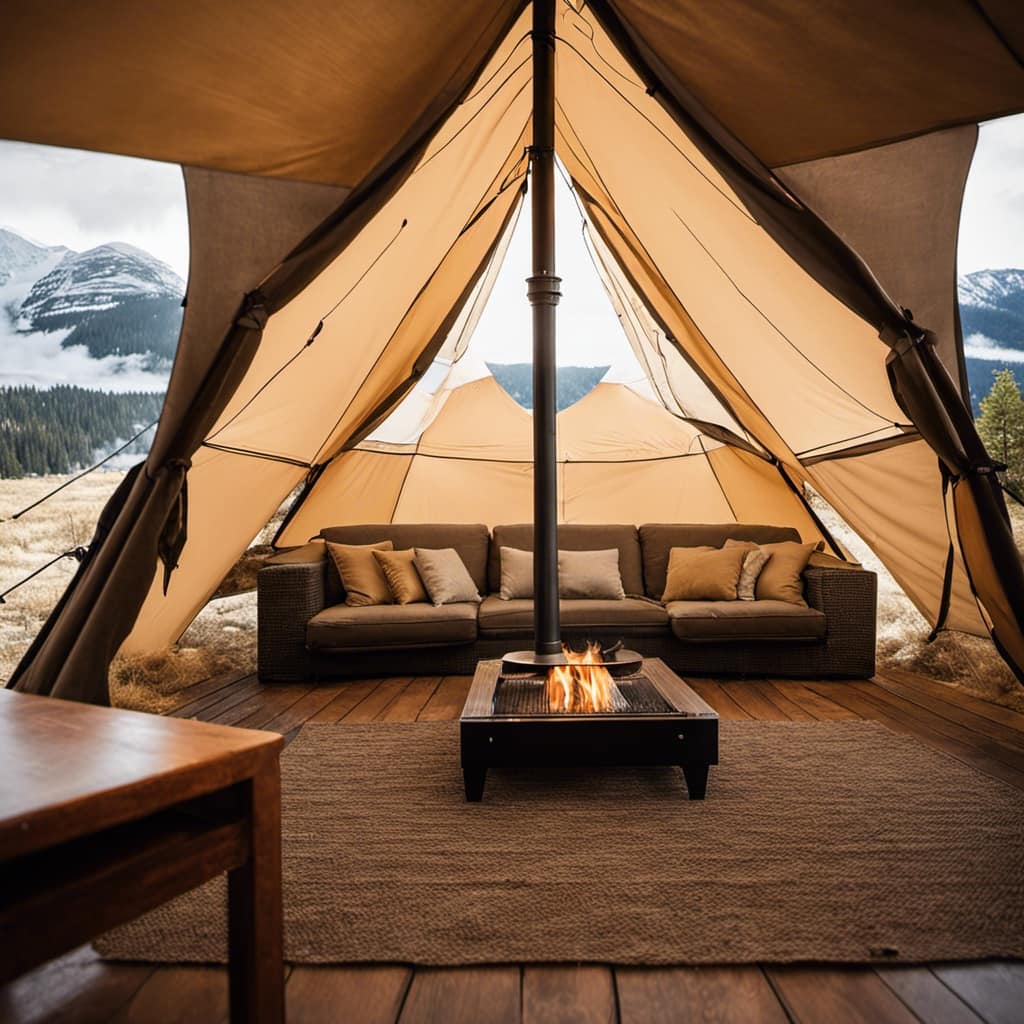
Use high-quality materials: It’s crucial to select stove pipes and connectors that are specifically designed for wood stove installations. These materials should be sturdy and resistant to high temperatures. Additionally, make sure that all components are properly sealed to prevent any potential leaks.
Follow the manufacturer’s guidelines: Each wood stove comes with its own set of instructions for installation and maintenance. It’s vital to read and follow these guidelines carefully. This includes proper clearances, venting requirements, and any specific instructions for the stove pipe connection.
Regularly clean and inspect the stove pipe: Over time, creosote and debris can accumulate inside the stove pipe, increasing the risk of a chimney fire. Regular cleaning and inspection will help identify any issues and ensure that the stove pipe is functioning efficiently. Pay attention to signs of corrosion, loose connections, or any abnormalities that may require professional attention.
Frequently Asked Questions
How Long Should the Stove Pipe Be for Optimal Performance?
The proper length of the stove pipe is crucial for efficient wood stove performance. When determining the optimal length, several factors need to be considered.

These include the height and location of the wood stove, the distance between the stove and the chimney, and the overall layout of the venting system. By ensuring the stove pipe is the right length, you can maximize the stove’s efficiency and prevent issues such as smoke backdraft or poor draft.
Can I Use Any Type of Stove Pipe for My Wood Stove?
Yes, you can use different types of stove pipes for your wood stove. There are various options available, each with its own pros and cons.
For example, single-wall stove pipes are the most common and cost-effective choice, but they don’t provide as much insulation as double-wall pipes.
Double-wall pipes offer better insulation and reduce the risk of creosote buildup, but they’re more expensive.
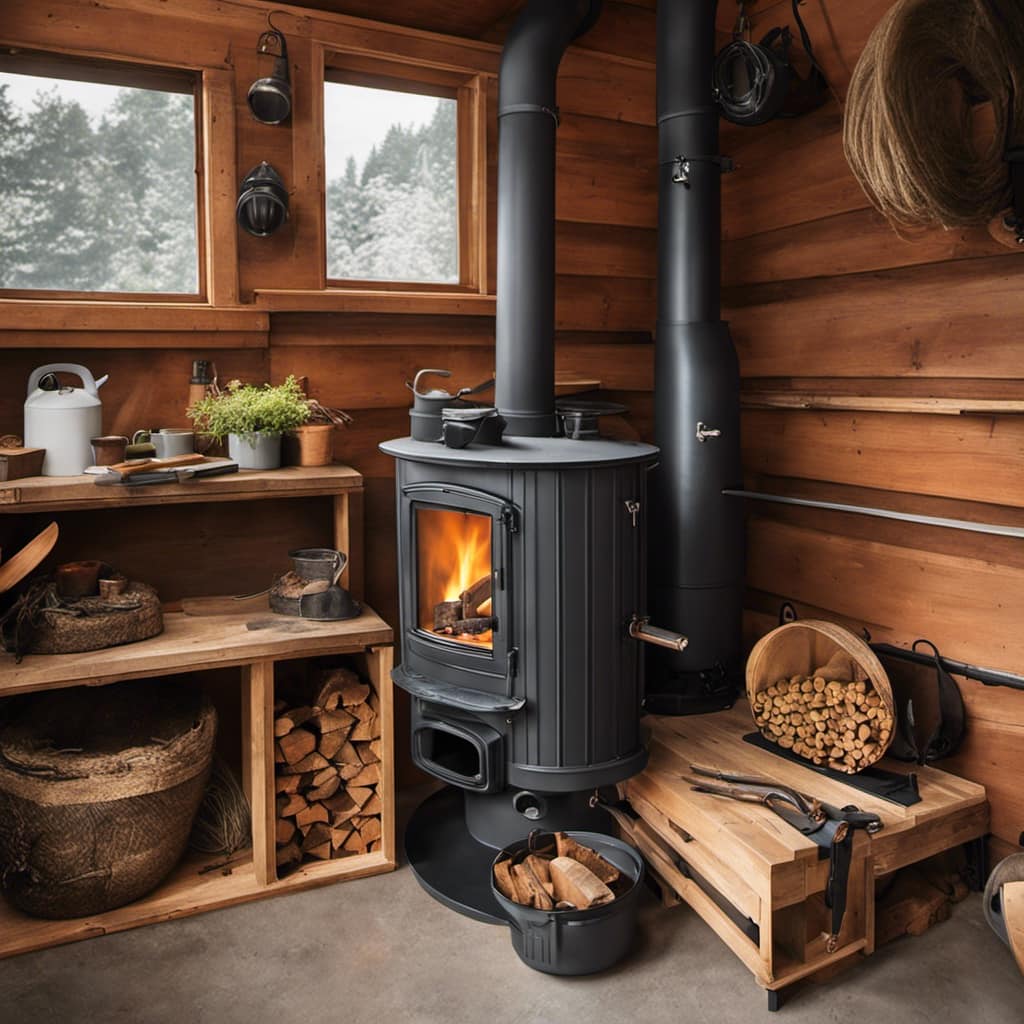
It’s important to consider factors like your budget, space constraints, and local building codes when choosing the right stove pipe for your wood stove.
Do I Need Any Additional Hardware to Attach the Stove Pipe to the Wood Stove?
To properly connect the stove pipe to the wood stove, you may need some additional hardware. It’s important to ensure a secure and efficient connection.
Depending on the specific wood stove model, you might require a stove pipe adapter, screws, or clamps. These additional components will help create a tight seal and prevent any leaks or smoke escape.
It’s crucial to follow the manufacturer’s instructions and consult with a professional if needed to ensure a safe and successful installation.
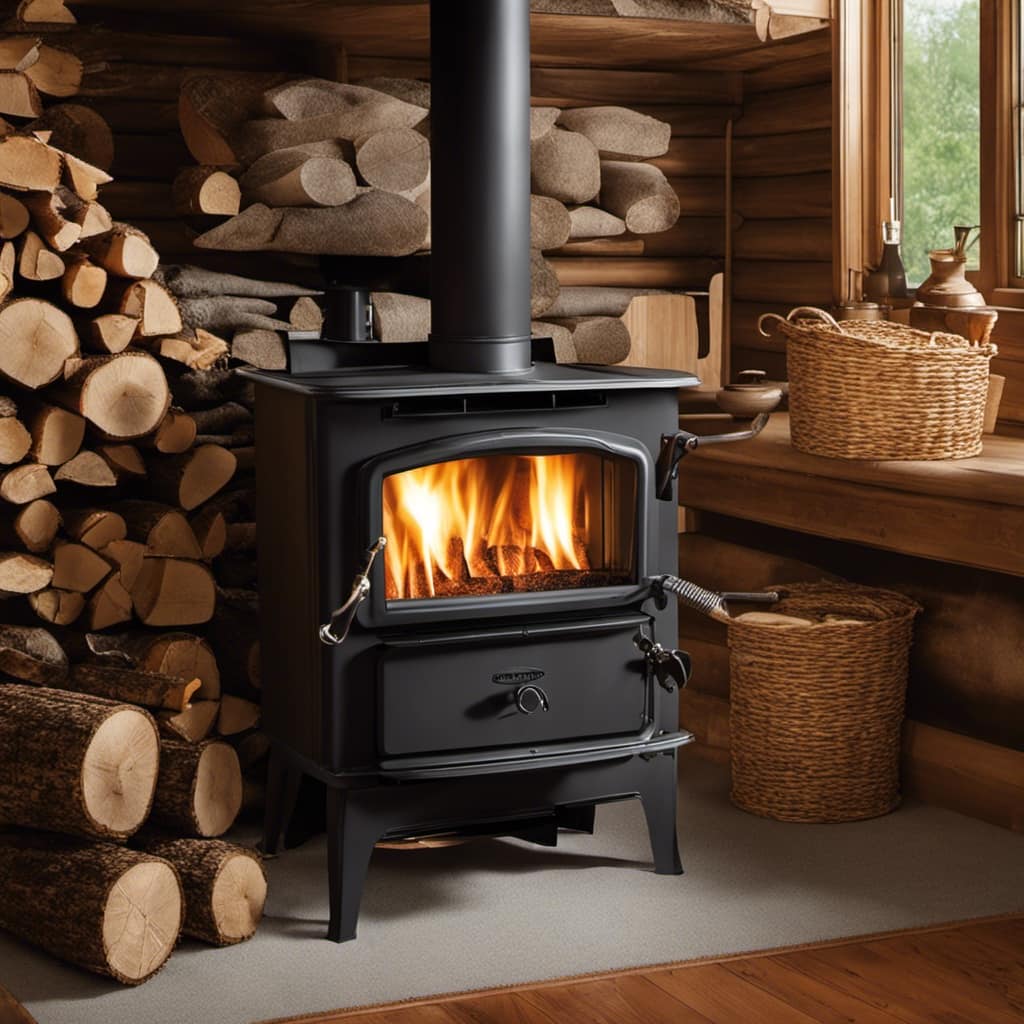
Are There Any Specific Regulations or Codes I Need to Follow When Installing a Stove Pipe?
When it comes to installing a stove pipe, it’s important to adhere to specific regulations and codes to ensure safety. The installation process can vary depending on local requirements, so it’s crucial to consult with a fireplace and chimney specialist or wood stove installation expert for guidance.
They can provide detailed information about the specific regulations and codes that need to be followed, as well as the necessary safety precautions to take during the installation process.
How Often Should I Clean and Inspect the Stove Pipe for Maintenance Purposes?
Regular maintenance and inspection of your stove pipe is crucial for the safe and efficient operation of your wood stove. It’s important to clean and inspect the stove pipe at least once a year to ensure it’s free from creosote buildup, cracks, or other signs of wear.
During inspection, look for any signs of damage, such as rust, loose connections, or excessive soot buildup. By staying on top of maintenance, you can prevent potential hazards and prolong the lifespan of your stove pipe.

Conclusion
As you embark on the journey of connecting your stove pipe to your wood stove, remember to approach the process with knowledge, technical expertise, and attention to detail. By following precise instructions and considering safety standards, you can ensure a successful installation.
Take your time, measure carefully, and secure the pipe connection properly. With these precautions in mind, you’ll be able to enjoy the warmth and comfort of your wood stove for years to come.
Growing up surrounded by the vast beauty of nature, Sierra was always drawn to the call of the wild. While others sought the comfort of the familiar, she ventured out, embracing the unpredictable and finding stories in the heartbeat of nature.
At the epicenter of every remarkable venture lies a dynamic team—a fusion of diverse talents, visions, and passions. The essence of Best Small Wood Stoves is crafted and refined by such a trio: Sierra, Logan, and Terra. Their collective expertise has transformed the platform into a leading authority on small wood stoves, radiating warmth and knowledge in equal measure.






